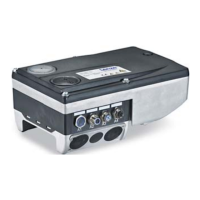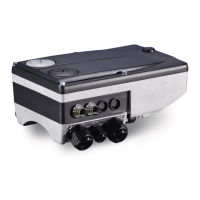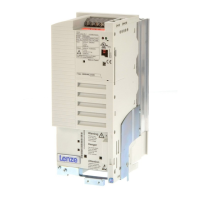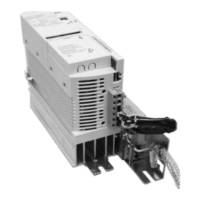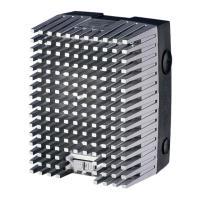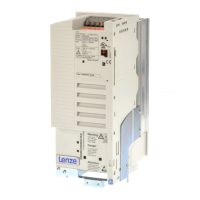Lenze · 8400 HighLine · Reference manual · DMS 12.0 EN · 06/2017 · TD23 271
5 Motor control (MCTRL)
5.10 Parameterisable additional functions
_ _ _ _ _ _ _ _ _ _ _ _ _ _ _ _ _ _ _ _ _ _ _ _ _ _ _ _ _ _ _ _ _ _ _ _ _ _ _ _ _ _ _ _ _ _ _ _ _ _ _ _ _ _ _ _ _ _ _ _ _ _ _ _
5.10.5 Slip compensation
Under load, the speed of an asynchronous motor decreases. This load-dependent speed drop is
called slip. The slip can partly be compensated for by the setting in C00021
.
• The setting of C00021
can be done automatically in the course of motor parameter
identification. Automatic motor data identification
( 141)
• The setting must be made manually if the motor parameter identification cannot be called up.
How to set the slip compensation manually:
1. Set rated motor current (C00088
) and rated motor frequency (C00089).
2. Calculate the slip compensation according to motor nameplate data:
3. Transfer the calculated slip constant s to C00021
.
4. Correct the setting in C00021
while the drive is running until the load-dependent speed
drop does not occur anymore between idling and maximum load of the motor in the
desired speed range.
Tip!
The following guide value applies to a correctly set slip compensation:
• Deviation from the rated motor speed
≤ 1% for the speed range of 10 % ... 100 % of the
rated motor speed and loads
≤ rated motor torque.
• Greater deviations are possible in the field weakening range.
•If C00021
is set too high, the drive may get unstable.
•Negative slip (C00021
< 0) with V/f characteristic control results in "smoother" drive
behaviour at heavy load impulses or applications requiring a significant speed drop
under load.
Note!
Slip compensation is only active with the following motor control modes:
• V/f characteristic control (VFCplus)
( 157)
• Sensorless vector control (SLVC)
( 192)
Parameters Info Lenze setting
Value Unit
C00021 Slip compensation 2.11 %
s Slip constant (C00021
) [%]
n
rsyn
Synchronous motor speed [rpm]
n
r
Rated motor speed according to the motor
nameplate [rpm]
f
r
Rated motor frequency according to the
motor nameplate [Hz]
p Number of motor pole pairs (1, 2, 3 ...)
s
n
rsyn
n
r
–
n
rsyn
-----------------------
100%⋅=
n
rsyn
f
r
60⋅
p
---------------
=
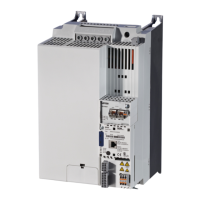
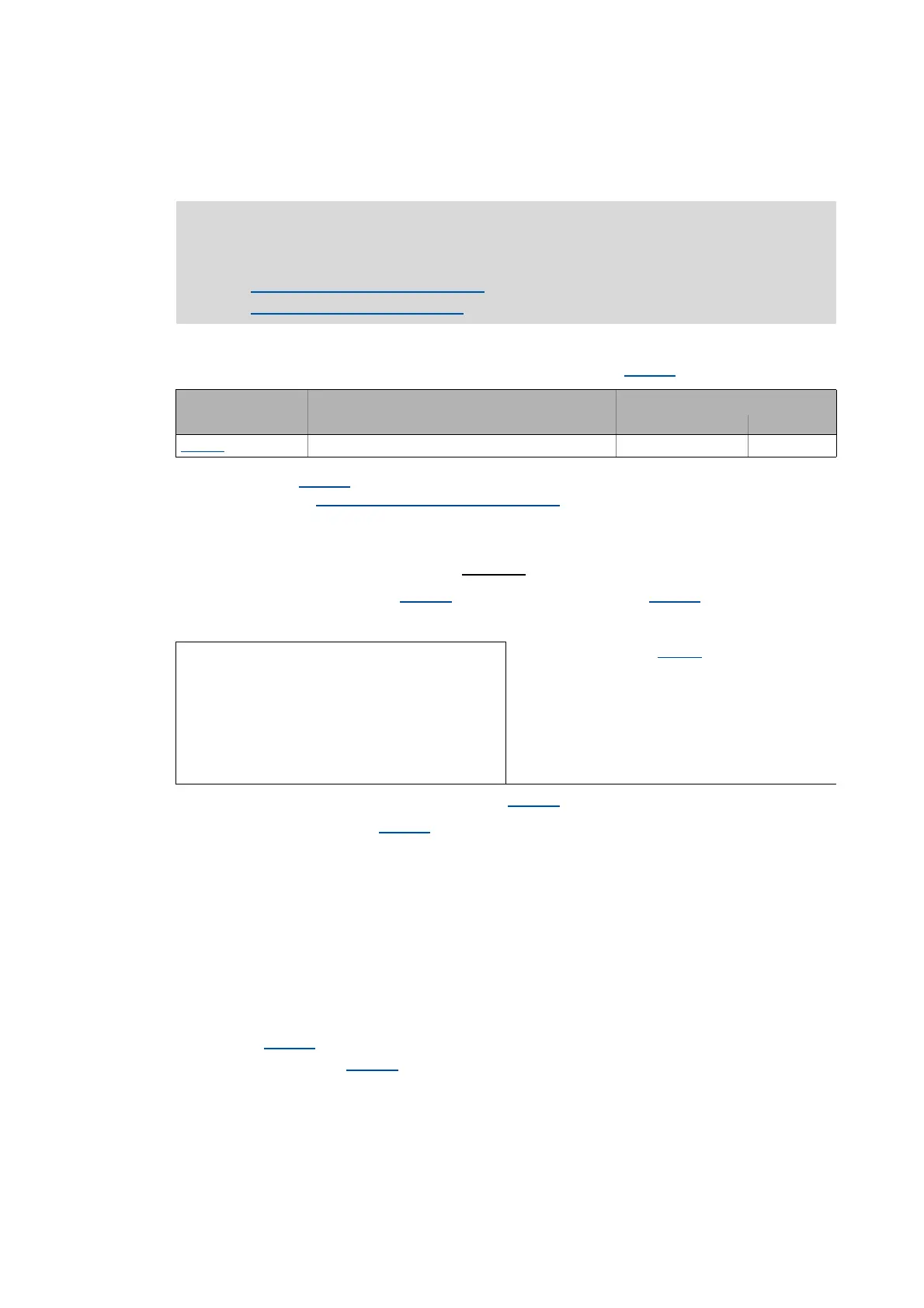